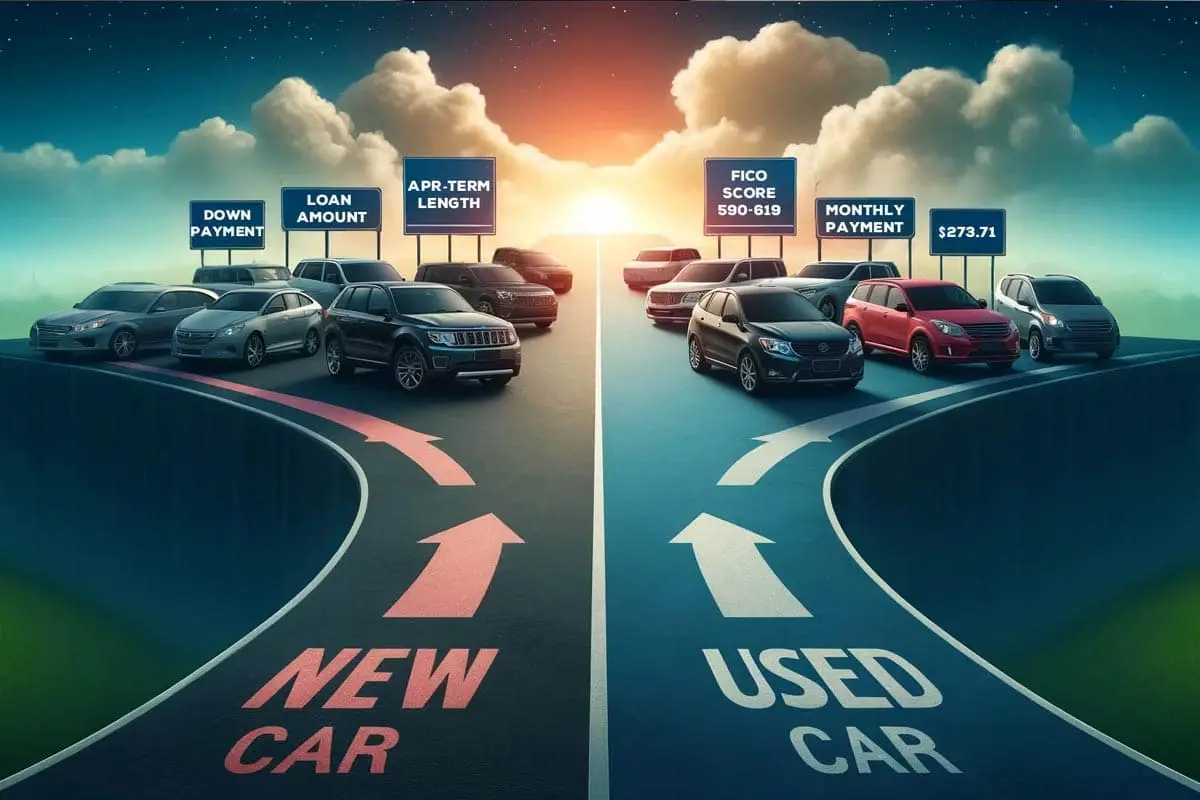With the current cost-of-living crisis, any savings in running your car will be welcome. Tyres may be essential but they are also expensive to replace, so is buying much cheaper, part-worn or even retreaded tyres a good idea? Or does such a move represent a big risk to one of the most safety-critical parts of the car?
When you think abou it, thousands of part-worn tyres are sold every day – anyone that buys a used car is usually also buying used tyres – but going for such rubber as a replacement for your existing tyres when they wear out is often condemned as a safety risk.
According to UK charity TyreSafe, more than 5 million used tyres are sold in the UK each year. Many of these are sourced from Europe, where the rules on tread depth are stricter than they are here.
What are the rules on tyre tread in the UK?
In the UK when tread depth drops below 1.6mm our tyres become illegal – drivers who fail to comply with the regulations face a fine of up to £2,500 and three penalty points for each illegal tyre. Yes – drive a car with four over-worn tyres and you could be in danger of losing even a completely clean licence.
But in Germany, for example, the legal minimum tread depth of a tyre is 3mm – almost double that of the UK. Even in such cases the tread can be worn by more than 50% at this point, as a brand-new tyre can have treads on it as deep as 8mm.
Yet it would appear perfectly feasible to put a tyre replaced in Germany on a car in the UK, and still comply with the law. In fact many of the tyres sold by the ‘part-worn’ industry in the UK are sourced from such places as the German market – just don’t buy such tyres if you are planning to take your car abroad…
There are far more serious concerns about going part-worn, however.
Laws for the sale of used tyres in the UK
Strict rules govern the sale of used tyres here in the UK, such as:
- tyres must have at least 2mm of tread depth across the entirety of their ‘contact patch’
- tyres must have no damage
- tyres must be clearly marked with the words ‘part-worn’ on their side walls in letters at least 4mm high.
But evidence suggests these rules are being routinely flouted right across the industry.
The UK tyre industry set up TyreSafe as a registered charity in 2006, aiming to reduce the number of tyre-related incidents on Britain’s roads by raising awareness of correct tyre maintenance and the dangers of defective and illegal tyres.
As part of this work, TyreSafe conducted a survey that revealed some scary goings-on in the UK part-worn market. Of 50 used tyres that TyreSafe purchased, a third had damage that rendered them unsafe, including sub-standard repairs and exposed cords (the woven metal structure) – one even had a piece of metal protruding through the tread by 5cm. And only one was correctly marked with the legally-required ‘part-worn’ insignia.
Now being an industry body, it’s perhaps not surprising that TyreSafe constantly and strongly recommends buying new tyres rather than part-worn or ‘used’ tyres which it says “can have devastating consequences”. But Trading Standards officers also mounted an investigation to better understand the part-worn market and they concluded that more than 93% of the tyres they bought were not compliant with the law, and between a third and half had defects that rendered them unsafe.
So if you do go the part-worn route you must make careful checks, partly to ensure you are buying tyres with enough tread left on them to justify the price, even if they are substantially cheaper.
You also need to factor in that even good part-worn tyres will last a lot less than new tyres – even legal ones can have a tread only 0.5mm over the limit so they’ll quickly wear out and you’ll be repeating the whole process again sooner than you think.
The most crucial checks, however will be to keep you and those you carry in your car safe. At the end of the day if you are driving on a new tyre with a deeper tread, the safer on the road you will be. That deeper tread may not make a difference until an extreme situation occurs – having to make an emergency stop for example in torrential rain – but we can never know when such situations may occur…
Recycling – a reason to retread?
When this reporter was a child and his dad went to replace car tyres he was routinely asked “new or remoulds?”. Retreading car tyres to create what in those days were dubbed remoulds was a familiar part of the retail motor industry with many consumers saving money by buying retreaded rubber.
Today, however, retreaded car tyres are much harder to find, the market having been almost killed off in the noughties by the availability of budget-priced new tyres manufactured in the Far East, especially China.
The single-use nature of modern tyres creates major problems. They are bulky and not at all environmentally-friendly, being notoriously notoriously difficult to recycle. Not can you dump them at the local tip because they’ve been banned from landfill sites since 2006.
According to the British Tyre Manufacturers Association (BTMA), just 15% of UK tyres are re-used by means of retreading. Another 25% go to make rubber crumb, which is used for soft surfaces in such places as children’s playgrounds and in the manufacture of moulded rubber components.
Another 15% of waste tyres are incinerated in the UK as part of the manufacture of cement, while the biggest proportion, 35% are exported to be incinerated elsewhere. Environmental concerns over such exports are rising, both here in the UK and in the countries we export our waste tyres to. So cutting the numbers of waste tyres would be a green move, and retreading could be one answer.
Retreading of car tyres is often lumped with the part-worn industry as something you really shouldn’t do for safety reasons. In some countries – though not the UK – it’s even illegal to retread a car tyre. This image has led to various myths growing up around retreaded tyres.
Retread providers claim, with justification, that the scare stories – such as that retreaded tyres are impossible to balance and more likely to burst – are simply not true and that retreaded tyres need be no less safe than brand-new ones. But some insurers, for example, will use the presence of retreaded tyres to invalidate policies, so if you are going to buy such tyres you need to check your insurance allows you to fit them.
Retreading is normal for truck tyres
In fact, using part-worn or retreaded tyres are completely different prospects, starkly illustrated by the fact that retreading is a norm for vehicles on which you would think the tyre would be under greater stress. In the commercial vehicle market, many heavy lorries and buses run on retreaded tyres, as do aircraft and even racing cars. Which leads to the question, should retreading be an option for regular passenger cars as a means of extending the life of each car tyre?
By now you are asking, what is retreading? It’s not, as some might think, simply cutting a new tread in the rubber that is left behind when the original tread has worn down – that would certainly be a major safety concern as tyre manufacturers only mould as much rubber onto a new tyre as is needed so there’s little waste margin once the tyre has worn.
Instead, retreading sees the rubber band with the worn tread on it removed, to be replaced by a completely new band in which the new tread has already been moulded. This is bonded to the existing tyre casing, known as the carcass. Such a process requires only a new rubber strip and not the woven steel structure that is built into brand-new tyres, as it’s already present – this is where the cost savings over new tyres are made.
Tyre retreading is properly regulated
So retreading can be very cost-effective, but it’s also safe. For a start, the compliance monitoring is much better than in the part-worn industry. Anyone can open a shack by the side of a road and sell part-worn tyres but setting up a retreading manufacturing facility takes serious investment, all of which is closely monitored by the authorities.
All UK retreading operators and their processes are certified by the Vehicle Certification Agency (VCA). Since 2004, all retreaded tyres sold in the UK have had to meet a United Nations EU compliance document – there are different ones for passenger car and commercial retreaded tyres. Retreaded tyres also all carry identification numbers showing exactly which facility they have come from.
Only certain tyres are suitable for retreading – a tyre must have a speed rating of at least 84mph (135km/h) but it tends to be higher. Apart from a few specialist examples, such as off-road or winter tyres, all retreaded passenger tyres are speed rated to at least 112mph (200km/h).
Stringent checks through the retreading process ensure there are no potential safety issues, with any sign of damage and such leading to immediate rejection of the tyre which is sent for recycling instead.
Perhaps the clearest sign that retreading is not a dangerous option is that in the commercial market many original tyre manufacturers, big names such as Michelin and Goodyear, do their own retreading – in fact, earlier this year Hankook Tyres proudly showed off its rebuilt and doubled-in-size retreading plant in Hammelburg, Germany that has taken this one site’s retreading capacity to 100,000 tyres per year.
Mind you, according to the BTMA even commercial retreading is under threat – the Association is campaigning for more recognition of the industry which it says extends the life of each tyre by some three times and means four times fewer tyres are used up each year.
Enormous environmental savings
The BTMA states that in a retread of a truck or bus tyre, 85% of the original tyre is re-used. The process saves 30kg of rubber (30% of a typical truck or bus tyre is natural rubber, classified as an EU critical raw material with future demand likely to outstrip supply), up to 20kg of steel and 60kg of CO2 emissions, while giving the tyre a potential total life of more than 375,000 miles – 15 times around the globe.
Equate such figures to the billions of car tyres in use around the world and the potential environmental savings of using retreaded tyres are massive, while producing tyres that are much safer than diving into the murky world of the part-worn industry.
So in a nutshell? The best option when replacing your tyres is of course to buy brand new, but retreaded tyres are a credible alternative with an environmental advantage, if you can find them. Just don’t go part-worn – they are not worth the money, or the risk…



/cdn.vox-cdn.com/uploads/chorus_image/image/62810996/Amm_DeepSentinel_01.0.jpg)

More Stories
RFPIO Appoints DocuSign, Google & Seismic Alumnus As CMO
Gurney Journey: An Improvisational Approach
On The Spot: Linda Albertini